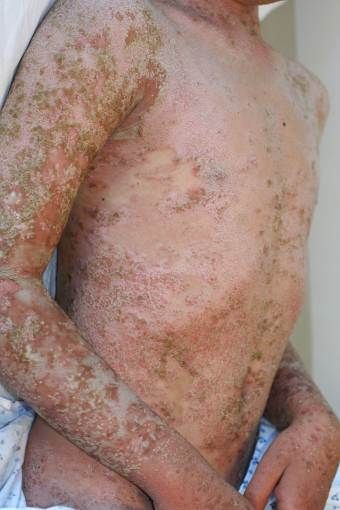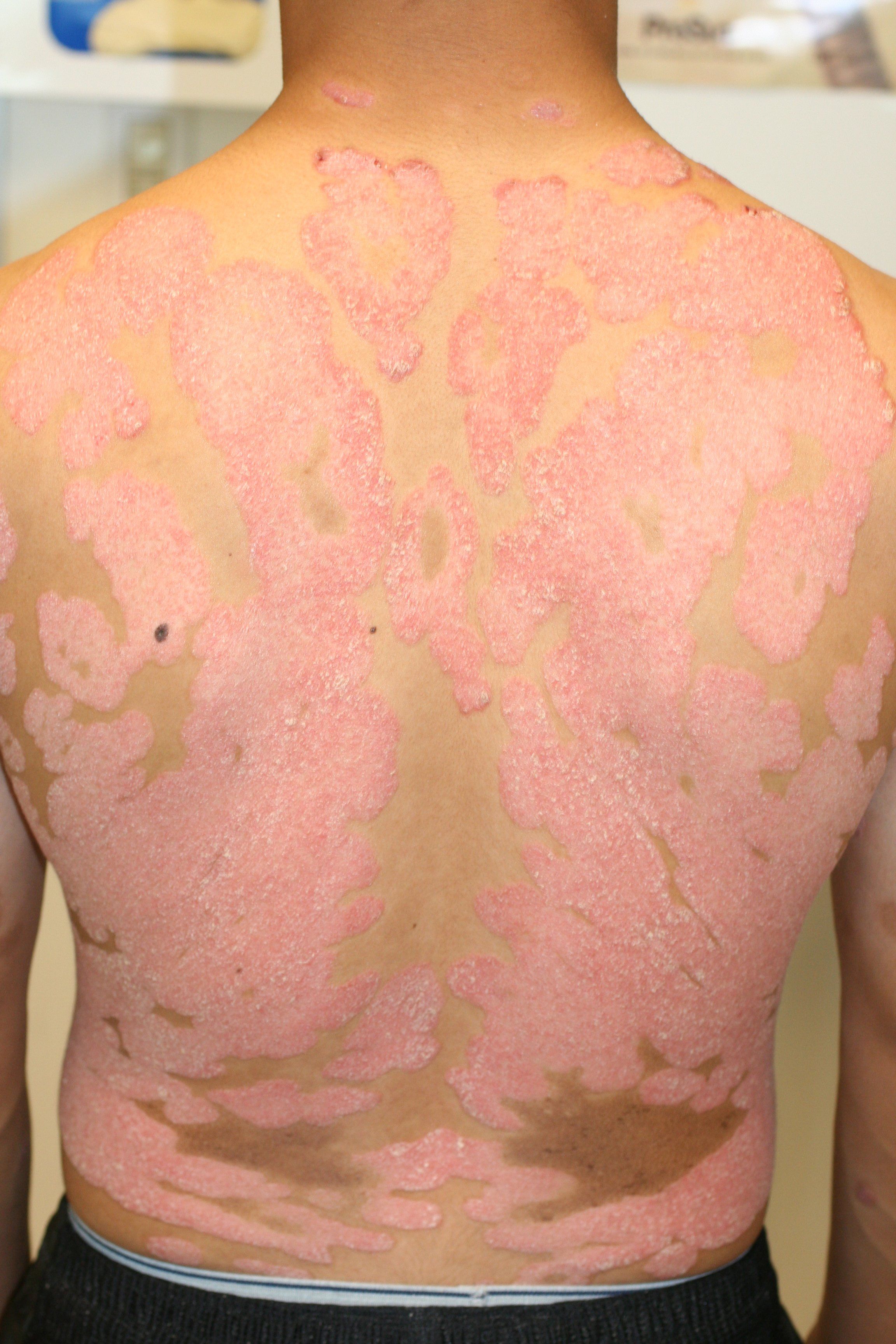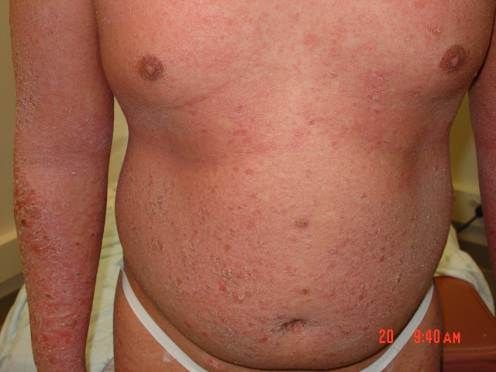- Case-Based Roundtable
- General Dermatology
- Eczema
- Chronic Hand Eczema
- Alopecia
- Aesthetics
- Vitiligo
- COVID-19
- Actinic Keratosis
- Precision Medicine and Biologics
- Rare Disease
- Wound Care
- Rosacea
- Psoriasis
- Psoriatic Arthritis
- Atopic Dermatitis
- Melasma
- NP and PA
- Skin Cancer
- Hidradenitis Suppurativa
- Drug Watch
- Pigmentary Disorders
- Acne
- Pediatric Dermatology
- Practice Management
- Prurigo Nodularis
- Buy-and-Bill
Article
Pediatric psoriasis
Psoriasis is a complex, multifactorial disease that requires a multidisciplinary approach when considering optimal treatment and management in pediatric patients.
AAD, San Francisco – Psoriasis affects approximately 1% of children in the U.S. and, although pediatric psoriasis may not be as common as other inflammatory diseases and conditions in this age group such as atopic dermatitis, psoriasis in children can be devastating. It is associated with far-reaching psychosocial stigma and significantly reduces the patients’ quality of life. Having a better understanding of the nuances of the disease and the potential therapeutic hurdles with children can assist clinicians in better treating and managing their patients.

9 year old with pustular psoriasis. Photo credit: Kelly Cordoro, M.D.
“There are many challenges in the management of pediatric psoriasis, but lack of comparative efficacy and safety data resulting in lack of FDA approved systemic and biologic therapies for severe psoriasis in the pediatric age group is a big one. We often rely on case series, expert consensus and data from use in other childhood diseases to make very important decisions about care,” says Kelly M. Cordoro, M.D., Associate Professor of Dermatology and Pediatrics, University of California, San Francisco.
Individually tailored treatments
Treatment of psoriasis in pediatric patients must be individualized and specifically tailored to each patient, Dr. Cordoro says: “The risks and benefits of potential treatments must always be weighed against the risks of undertreated disease. In the case of children, this is additionally challenging given our uncertainty about the natural history of treated or untreated pediatric-onset psoriasis. Many children will likely endure a lifetime of waxing and waning disease and the treatments required to manage it. With this in mind, optimal management calls for therapeutic choices that will maximize outcomes while minimizing cumulative toxicities.”
READ: Secukinumab approved for psoriasis
According to Dr. Cordoro, the choice of treatment must be influenced by a number of factors, including: the primary morphology and presentation of the disease, health history, speed of progression, patient age, the presence of comorbidities such as psoriatic arthropathy or obesity, impact on quality of life, patient/family preference for treatment, and level of disability. Although there is no “one size fits all” treatment choice, Dr. Cordoro said that certain therapies work best for certain presentations.
“Importantly, severity is not limited to body surface area of involvement because even very limited disease, if in a visible or challenging location such as the face or on the genitals, can create a tremendous impact on self-esteem and therefore may warrant more aggressive treatment,” Dr. Cordoro says.
NEXT: The use of combination topical therapies and phototherapy

16 year old with psoriasis. Photo credit: Kelly Cordoro, M.D.
In her pediatric patients, Dr. Cordoro tries to maximize the use of combination topical therapies and phototherapy, as these are associated with a time-tested high safety profile. Treatment decisions are individualized for each patient, Dr. Cordoro says, but they are often heavily influenced by the clinician’s experience and comfort with various combination therapies. For example, although off-label in children, Dr. Cordoro tries conventional systemic therapies such as acitretin, methotrexate and cyclosporine, and biologics including TNF-alpha and IL12/23 inhibitors in more severe and recalcitrant cases.
READ: Psychosocial impact of psoriasis: The statistics
Although they are readily employed in children, none of the biologics are approved for use in pediatric psoriasis in the U.S. Due to long-term safety concerns as well as insurance coverage issues, Dr. Cordoro says that biologics are often relegated to second- or third-line agents for refractory cases of plaque psoriasis. However, given the accumulating long-term safety data for TNF inhibitors and their tremendous efficacy for plaque and pustular psoriasis, Dr. Cordoro notes that the biologics have assumed a more primary role in treating severe psoriasis in children.
“When choosing treatments for the short-term, we also need to consider the longer-term perspective and anticipate the types of therapies that may be required in the future. Using the principles of rotational and combination therapy can help to reduce toxicities and maximize efficacy,” says Dr. Cordoro.
NEXT: Comorbidities and complications
Comorbidities and complications

14 year old with plaque psoriasis and metabolic syndrome. Photo credit: Kelly M. Cordoro, M.D.
In addition to the challenges in treating the cutaneous symptoms of psoriasis, clinicians must also address a number of potential comorbidities that have been associated with the disease including obesity, metabolic syndrome and psoriatic arthritis. The current literature supports an association between psoriasis and adiposity in children, and Dr. Cordoro said that this association may be bidirectional, as obese children have been shown to be at risk for incident psoriasis, and more children with psoriasis, versus non-inflammatory controls, are obese.
“There is a dose response effect between psoriasis severity and obesity. In addition, there are signals for association with components of the metabolic syndrome, and of course, as we have known for decades, psoriatic arthritis,” Dr. Cordoro said. “Cardiovascular disease is clearly associated with psoriasis in adults, and one of our challenges is to determine whether systemic treatment in the pediatric age modifies this risk in adulthood.”
READ: Psoriasis and comorbidities a worldwide issue
Dr. Cordoro and colleagues recently published a paper discussing therapies for different presentations of severe psoriasis in pediatric patients, given the multitude of presentations and treatment options.1 Wynnis Tom, M.D., and colleagues from the department of dermatology at the University of California San Diego have recently assembled a multidisciplinary group of experts, the collective effort known as the Comorbidity Screening Initiative (CSI), to review the world’s literature on pediatric psoriasis comorbidities. According to Dr. Cordoro, the group is in the process of developing a guidelines manuscript, which is nearing its final stages.
“Psoriasis is more than a skin disease, and we play an important role in communicating with and educating our primary care and subspecialty colleagues about the treatments we have prescribed and about potential comorbidities. As specialists, we can develop a therapeutic alliance with primary care providers and solicit their help with monitoring for comorbidities. As we have learned in the CSI process, the data for comorbidities in children is strong, but not elevated to a level requiring additional screening beyond that recommended by the American Academy of Pediatrics for routine screening for children of various ages. If we at least do our part by communicating with primary care and reminding them that psoriasis may have associated metabolic, psychiatric and other comorbidities, we are putting our patients in the best possible position to receive optimal care,” Dr. Cordoro said.
NEXT: Far-reaching implications
Far-reaching implications
The majority of pediatric patients are undertreated for fear of adverse effects, Dr. Cordoro says, advising that physicians should consider the risks of untreated or undertreated disease as seriously as they consider the risks of treatments. Children, especially pre-adolescents and adolescents, are at risk for a lifetime of struggle if they are stigmatized from a young age because of a chronic and disfiguring skin disease like psoriasis.

7 year old with severe plaque and guttate psoriasis. Photo credit: Kelly Cordoro, M.D.
Treating psoriasis in pediatric patients goes beyond medical treatments; it is also about managing the emotional and psychological impact of the disease, particularly mood disorders such as anxiety and depression. Even minor flaws in the skin can lead to negative peer reactions and thus impact cutaneous body image development in adolescents.2 The downstream consequences of this are academic and occupational underachievement and the potential for social withdrawal and isolation. In a vicious cycle, this can also lead to overeating and obesity, which then can potentiate psoriasis severity.
READ: Difficult forms of psoriasis respond well to anti-PDE4
The development of body image and self-esteem in general is critical to a happy, healthy, productive adulthood. Dr. Cordoro recommends assessing psychosocial vulnerability in pre-teens and teens. Even simply asking the patient how their skin appearance is affecting their life validates the appearance as being about a medical issue rather than vanity.
Dermatologists are in a very privileged and perilous position in terms of treating skin disease of children, because the impact of skin disease goes far beyond the skin: “We are no longer in an era where we can just write prescriptions. We have a responsibility to address the patient in a holistic manner because optimal mental and physical health may have a tremendous impact on limiting comorbidities, disease severity and response to treatment.”
NEXT: References
Dr. Cordoro has no relevant disclosures.
References:
1. Marqueling AL, Cordoro KM. Systemic treatments for severe pediatric psoriasis: a practical approach. Dermatol Clin. 2013;31(2):267-88.
2. Gupta MA, Gupta AK. Evaluation of cutaneous body image dissatisfaction in the dermatology patient. Clin Dermatol. 2013;31(1):72-9.





